The cleaning, and organizing at home for my mental health continues. I had recently set up a new sideboard cabinet and was finally able to bring in my Hulk toys, and comics out of the garage, and into the apartment. I’m only missing a few pieces, but they will eventually turn up as I clean up. Going over the toys, and various books made me think a little bit more about my favorite Marvel character. I was going to write a short thing about my favorite artists to ever draw the Incredible Hulk. Then I started thinking about his greatest story arcs. As well as short runs, and even one-shot issues. There were so many brilliant creators working on the title over the past 60+ years. It would be a disservice to just highlight a few.
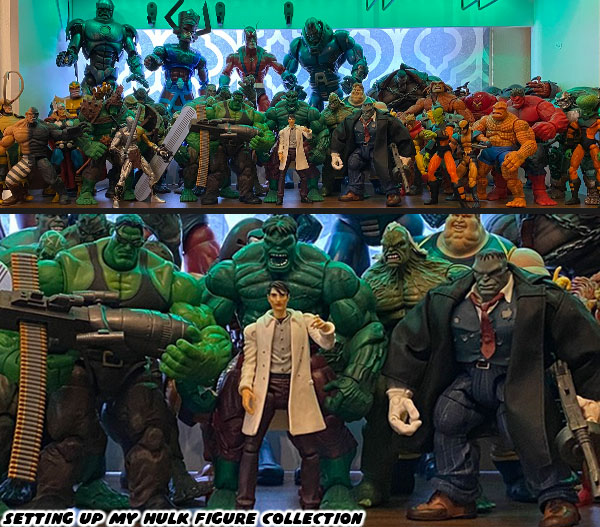
I started thinking about how to talk about the writers, artists, and character of the Hulk himself. How could I explain my fascination with him? I had actually covered a lot of that in my previous series. Talking about the greatest Hulk villains in the blogs last week was a good way to set up this conversation. Who was the Incredible Hulk? What made for a great Hulk artist, or writer? I wanted to highlight my observations for writers, or artists trying to figure out your own story. I’m a self-taught illustrator, but also spent years learning about writing. I had great teachers help me learn how to create short stories, novels, and screenplays. I learned how to craft heroes, and villains by some award-winning authors. I learned how to develop a memorable plot, and find the right voice to tell that story.
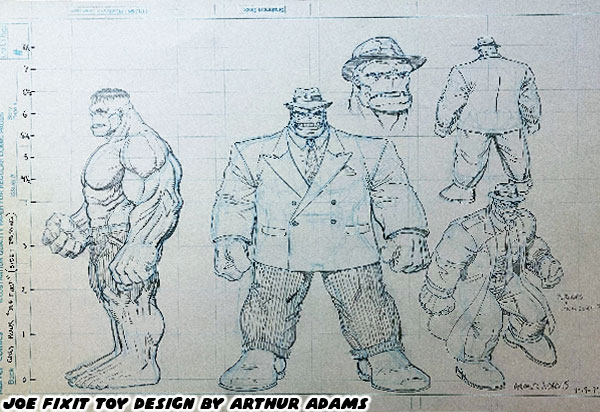
The failures, and successes of a good story were brought up in the previous blogs. I wanted young creators to think about the story they were trying to tell. Try to find a plot that fits their character. Try to find a voice that fits the character. If you were thinking about writing, or drawing a comic on an established character then I would advise you to develop a narrative that fits the character. It’s a bad idea to change an established character to fit a narrative. You wouldn’t for example try to shoehorn Frank Castle aka “the Punisher” into a lighthearted story meant for Squirrel Girl. Although the two were part of the same universe they were used for different reasons. They served different purposes, told different stories, and catered to different audiences.
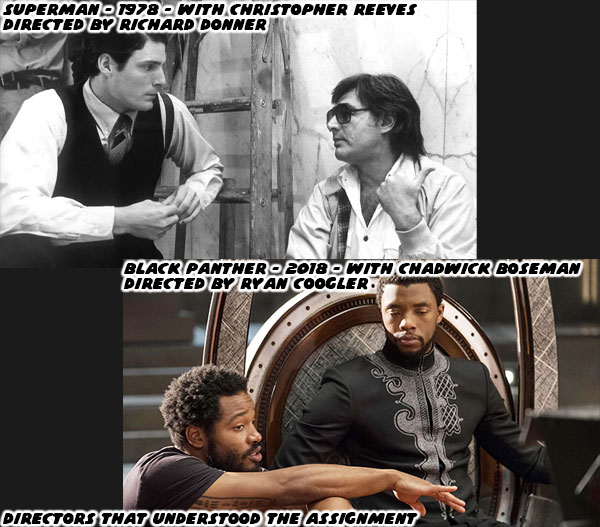
Movies often succeed when the right actor, the right screenplay, and the right director all came together. When approaching an established comic book character think of yourself as the director. How would you put together the elements that best served the character, and story? There had been hundreds of comic book movies in the past century, but only a handful could be thought of as truly exceptional. These projects managed to get all the ingredients just right, and sometimes in spite of interference from producers, and studios. Richard Donner understood the myth of Superman, and his secret identity of Clark Kent. When it came to live action film he set a standard almost 50 years ago. Many fans of the DC stories would say that his version of Superman hasn’t been topped yet. Something similar could be said of Ryan Coogler, and his ability to bring the Black Panther to light. Both directors understood the characters backwards, and forwards. They weren’t’t afraid to present them as flawed, or vulnerable. They also knew the best context in which to place their heroes. To compound matters some of the characters worked best when set in a historical period. In order to present them correctly then a director would have to do some world building. They would have to convincingly recreate the era.
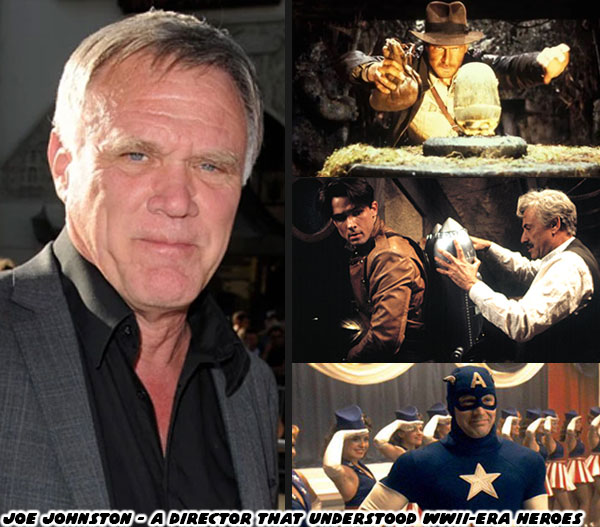
Another example of a director that understood the characters could be seen with the movie Captain America: The First Avenger. Producer Kevin Feige, and Marvel Studios selected Joe Johnston to direct. The movie was set in the WWII era. It required an understanding of US culture during that period. The types of heroes, and villains that inspired the world. Mr. Johnston worked with George Lucas on various films, and learned the ropes from his team. He was intimately familiar with the period that would be covered in the Marvel feature. He worked on Indiana Jones, the Rocketeer, and October Sky which were all set in the same era as the Captain America movie. It was virtually impossible for Mr. Johnston to mess up the direction. He just needed a story, and actors that he could work with. Thankfully that came through as well. Certainly any director could have done a period piece, but would it have been as well done? I highly doubt it. There had been many comic book films that missed the tone of the original comics. They were miscast, had the wrong writer, or director, and weren’t as memorable as the films I mentioned above. This had often been a problem for the Incredible Hulk. There had been few people able to adapt the character to live action. Part of the reason why was because they had a poor understanding of the character himself.
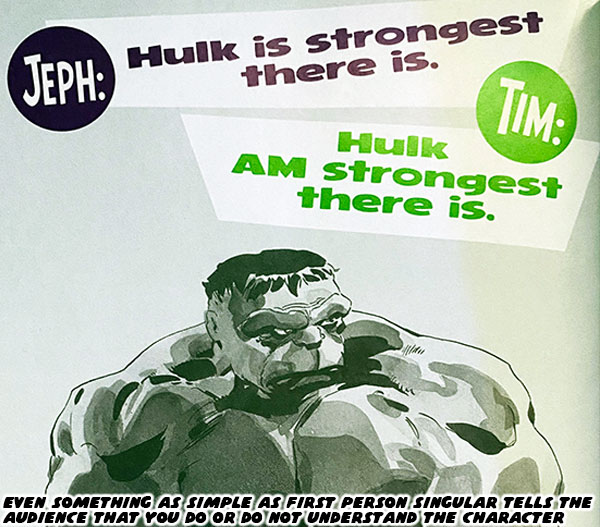
The way the Hulk speaks, the way he acts. His rage even comes from somewhere. Writers that did their homework could pick up on these details. Even casual fans knew that the Hulk had a limited vocabulary. It wasn’t that he was dumb, but rather had the temperament, and speech of a child because that was when Banner suffered his greatest trauma. The Hulk spoke in the third person, saying things like “Hulk tired, Hulk hungry, Hulk sleep now.” He also had certain catchphrases like “Hulk smash!” Or “Hulk is the strongest there is!” These were things that even non-fans could recall about the character. Perhaps they heard it from a cartoon, or saw it on TV. Surprisingly there were professional comic creators that didn’t know the most basic details of the character. The artist Tim Sale worked with Jeph Loeb on an origin story titled Hulk: Gray. It was a retro-inspired story with a limited color palette.This was because the Hulk was originally colored gray before his color was changed to green. The duo worked on other origin books including Spider-Man: Blue, and Daredevil: Yellow. Mr. Sale attributed an incorrect quote to the Hulk. In it he used the word “am” instead of “is.” This could be considered as a minor detail, unfortunately that form of speech belonged to another character, from a different company.
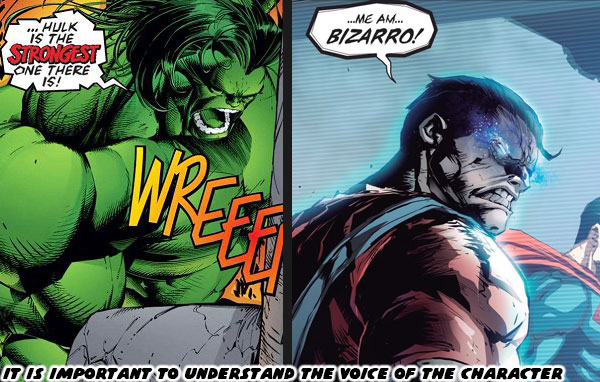
The evil mirror version of Superman was called Bizarro. In some origin stories he was a defective clone of Superman, in other stories he came from a cube planet where everything was absurd, and surreal. Bizarro had an unusual speaking pattern. He was known for saying things like “Bizarro am number one!” and “Me am Bizarro!” He tended to think, and speak in opposites. For example if he hated a character he would say “Bizarro loves you.” It was something that even the most casual fan could remember about the character. It was sad to think that an artist working on a Hulk book didn’t know the differences between Bizarro, Marvel, and DC. The thing about presenting a comic book character was that you had to know how to write to their strengths. This meant being able to write, and draw stories that maximized the hero, and their alter-ego.
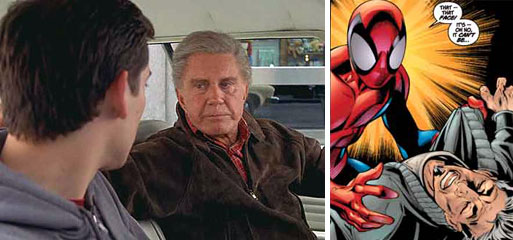
A creator for example would have to know how to build a story for Superman, and Clark Kent. Or Peter Parker, and Spider-Man. Poor writers focused solely on one or the other, and rarely found a balance that the character needed to remain unique. The Hulk was possibly the most difficult character to create for. The Hulk was often regarded as a monster, rather than a hero. Dr. Bruce Banner was also treated as a fugitive. The genius of Reed “Mr. Fantastic” Richards was celebrated, but the genius of Banner was feared. Tony “Iron Man” Stark was presented as confident, whereas Banner was seen as arrogant. These distinctions made for a very complex character that could also instantly hook the audience. As for the Hulk himself there were so many possibilities with his power set that many types of stories could be written about him.
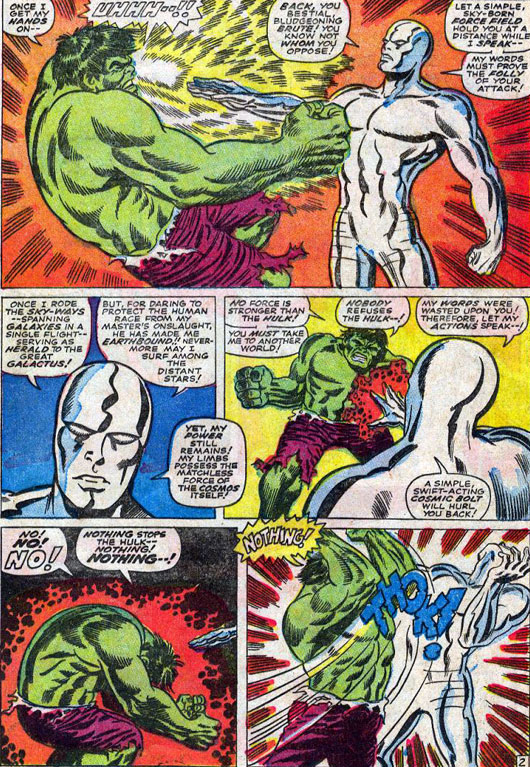
The Hulk was known for being absurdly strong, and durable. The angrier he got, the stronger he got. He had no known upper limit to his strength, being able to go toe-to-toe with even cosmic beings like the Silver Surfer. The Hulk could never grow tired, and healed from injuries faster than Wolverine. He also had some unique powers such as being able to see ghosts, resist some forms of magic, and breathe underwater. If sufficiently enraged he didn’t need to breathe at all, including in outer space. Crafting a story that employed the genius of Banner, and gave the awesome powers of the Hulk was a challenge for even veteran creators. Yet it was not impossible. In fact I thought about it for a while, and discovered that there were a few formats that fit the character. Let’s start with the dramatic interpretation, It was the one that most Gen-Xers were familiar with. The Incredible Hulk television series debuted in the late ‘70s, more than a decade after the comics had started. Most of Generation-X were still kids when the show was on the air. To say it left an impression on us would be a severe understatement.
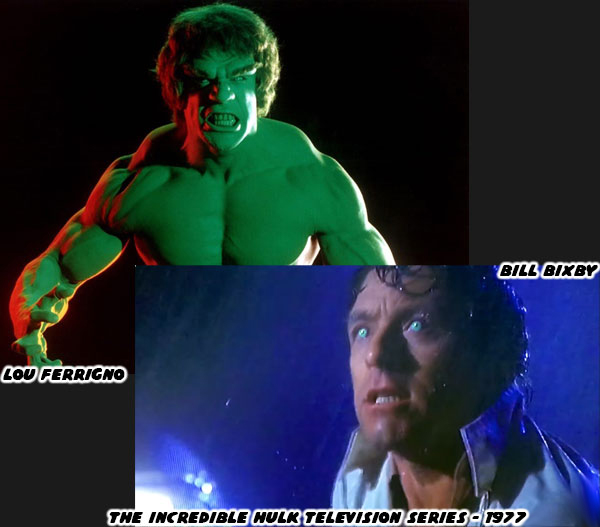
The show was actually well written, and well acted. Bill Bixby played Dr. Banner, and bodybuilder Lou Ferrigno played the Hulk. Bixby had actually turned down the role initially because he didn’t want to be associated with a project that was too silly, cartoonish, or campy, like the Batman series from earlier. After reading the script he was sold on the part. He helped keep the tone of the series grounded in realism. Every action that he took had weight, and purpose. Bixby did an exceptional role as a fugitive, wandering the countryside in an effort to clear his name. He did everything in his power to remain calm even in the most stressful situations. He genuinely feared for the safety of the public if he lost control, when he couldn’t’t control his rage his eyes would change color, and we knew the Hulk would appear next. The show coined the phrase that several generations would associate with the character “Don’t make me angry (Mr. McGee), you wouldn’t like me when I’m angry.” The Hulk was treated as a curse. The show actually made audiences pity the life of Dr. Banner. He was trapped in a living nightmare that he couldn’t outrun. There was no pause because the authorities, and an investigative reporter named Jack McGee were hunting him in every episode. The tragedy of the character landed with the mainstream more than just about any other interpretation.
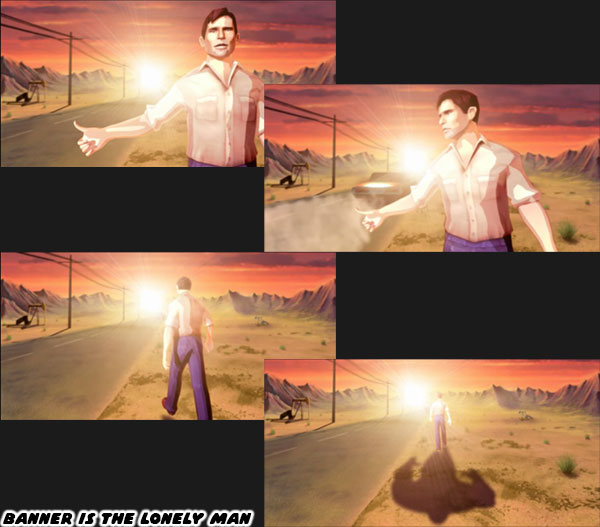
Banner had no home, no friends to fall back on, and hitchhiked his way across the US in an effort to avoid capture. At the end of each episode we often saw him wandering an empty road while the melancholy song
The Lonely Man, composed by Joseph Harnell played. This tragic lifestyle had been revisited in other media, including the Hulk game by Radical Entertainment. The television series created a template that worked exceptionally well for Banner, and his relationship to the Hulk. Writers working on the Hulk stories could learn that a Banner-centric arc could be written as a psychological horror. There were many other types of stories that could be created as well, but we will look at those in the next blog. Were you a fan of the Hulk in popular media? Did you have any favorite comic book movies, or characters? I’d like to read about them in the comments section. As always if you would like to sponsor me
please visit my Patreon page and consider donating each month, even as little as $1 would help make better blogs and even podcasts!




















No comments:
Post a Comment